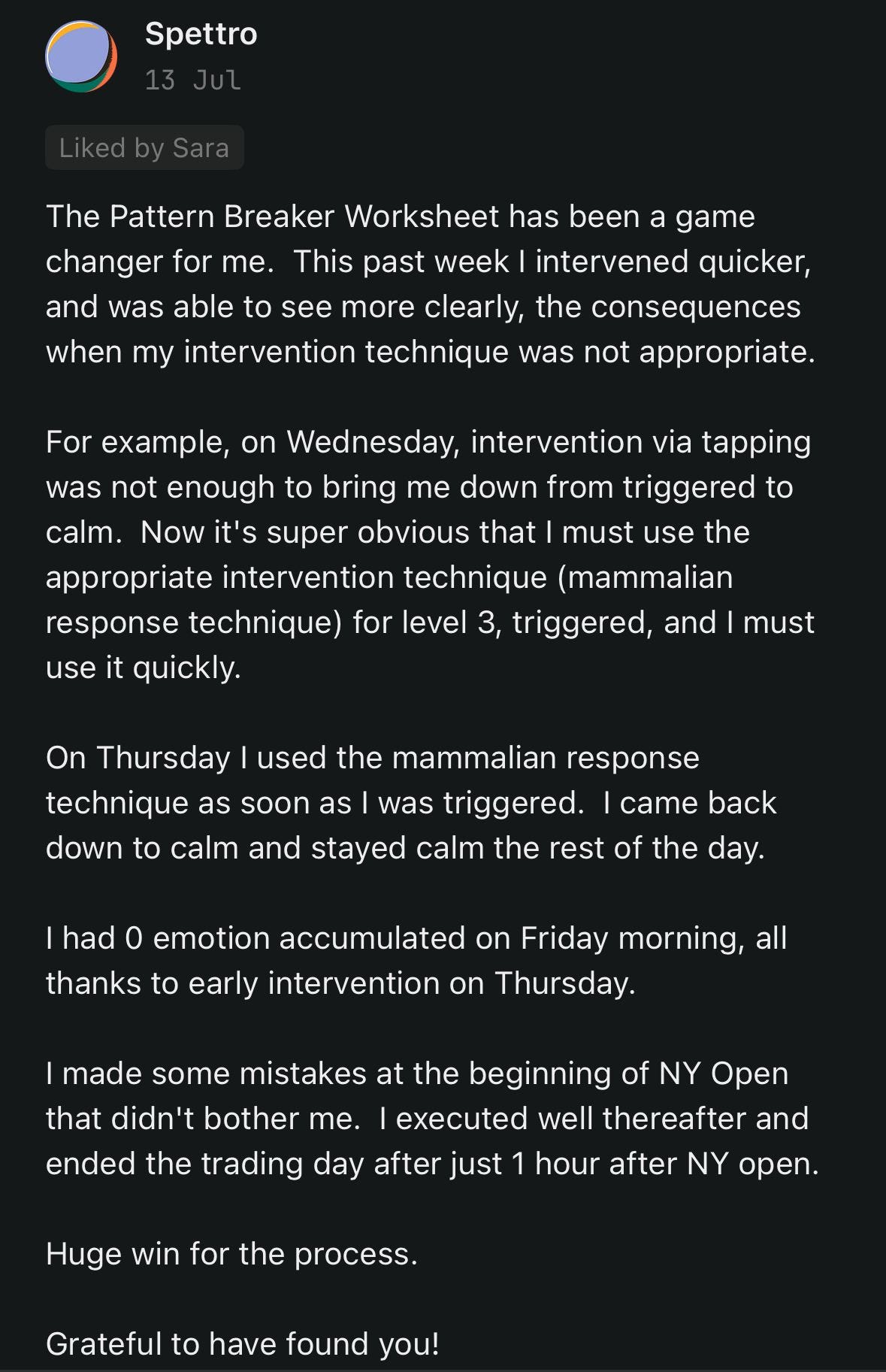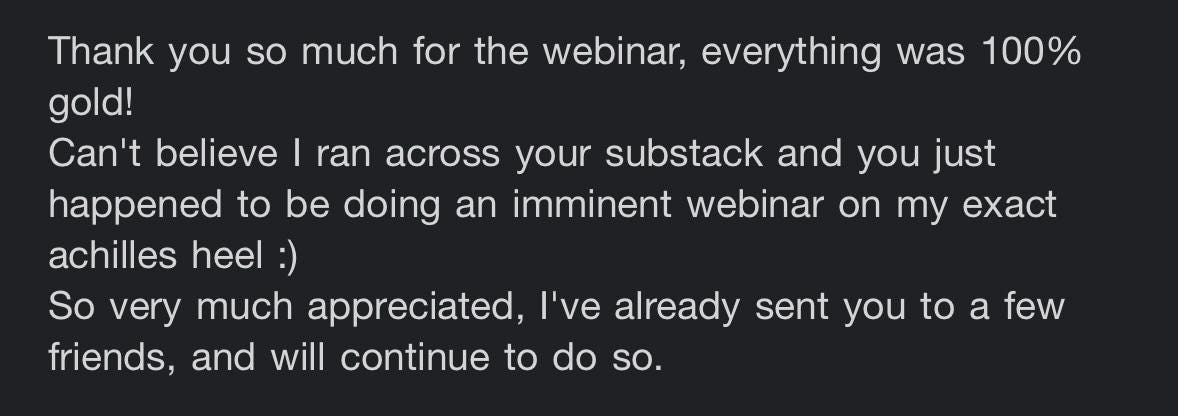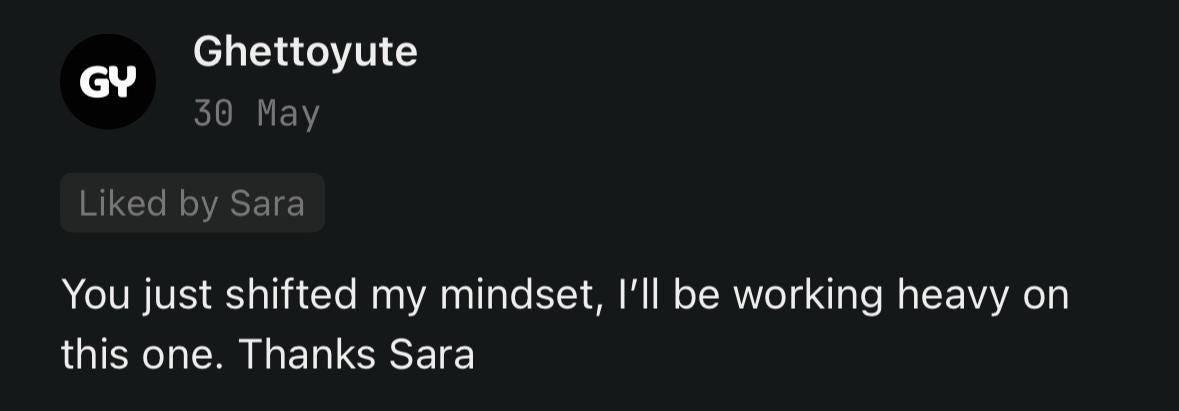The Thursday Trader's Tip is your weekly performance edge in under 5 minutes. Want access to coaching tools, mental frameworks, and live masterclasses? Upgrade to paid to get the full experience:

Most traders want flawless execution.
No mistakes. No emotion. No relapse.
But that’s not how real performance works — in elite training, progress is measured by how quickly and effectively you can recover, not by how rarely you fall.
As Michael Jordan said, “I've failed over and over and over again in my life. And that is why I succeed.”
Not all mistakes are created equal:
Some are sloppy.
Some are emotional.
Some come from a knowledge gap.
Others from complacency.
I wrote about the five categories of trading mistakes here.
When you treat every mistake the same, you lump them all together in a bucket of guilt and miss the valuable insights.
Today, you’ll learn how to measure real progress when breaking a hardwired trading habit.
Hardwired Habits = Addictive Loops
Let’s call it what it is:
If you continue to act impulsively against your better judgment, despite knowing the consequences, you’re not just undisciplined…
You’re stuck in a behavioral addiction.
You want to stop, you know the consequences, but you still do it.
That’s a loop your brain hasn’t unlearned yet, mainly because you keep reinforcing it.
The Wrong Way to Track Progress
This is where most traders go wrong:
They measure progress based on how perfect the day went.
Very common: you look back on your day, spot three missed trades (curiously, all of them winners), mark better entries and exits, and leave demotivated — even if you had a green day.
Stop tracking your progress based on how “perfect” your session was.
Hindsight is a b*ch, and perfect performance doesn’t exist. In fact, trying to be perfect backfires. You might want to stop doing that before it ruins your confidence.
Hindsight will always make you feel behind.
It will always highlight what you “could’ve” done.
And it will always ruin your confidence if you let it.
✅ Evaluate your trading day against your plan
❌ Not against what happened in the market.
The Two Metrics That Actually Matter
Once you shift that, you’re ready to track the only two metrics that matter:
Frequency of relapse – How often do you get triggered and lose control
Size of relapse – How far does it go before you catch yourself?
Progress looks like this:
You used to blow up weekly. Now it’s monthly.
You used to spiral into -5R days. Now it’s -2R and you stop.
You used to lose control 3 times a week. Now it’s once. And you pause.
That’s real. That’s measurable. That’s progress.
Teach Your Brain What Safety Looks Like
Every time you manage a trigger safely, your brain learns something:
“I can survive this moment without acting on it.”
The more you prove this to yourself, the less you’ll be triggered. Your system stops seeing discomfort as danger.
Use The Pattern Breaker Worksheet for this.
To help you track progress, I’m sharing the same tool I gave in my last webinar on impulse control:
The Pattern Breaker.
Here’s how it works:
Every time you feel a trigger, log it
Track your response: Did you act on it? Or manage it?
Over time, you’ll spot progress in the way you react to your triggers and the size of your mistakes.
Moreover, you’ll collect valuable data, such as warning signs, to improve your self-regulation skills over time.
(Duplicate the template to your own Notion in the top-right corner. If you don’t have Notion, quickly create an account—it’s free.)
In Closing
Don’t measure your performance against perfection. Measure it against your last relapse.
Start using the Pattern Breaker Template as soon as possible to measure the right metrics of progress.
Peaceful trading,
Sara
What Paid Subs Have to Say:
Related Reads:











I just signed up for Sara's subscription today and I'm just amazed on how well my trading has already improved in a matter of a few hours! I used the Pattern Breaker spreadsheet today for 2 trades this morning on NQ:
1) I entered into a trade with a unfavourable R:R (less than 1 to 1) and I exited with a small loss (even though the trade ended up working in my favour). I entered all the details in the pattern breaker journal. I had tunnel vision and shallow /tight breathing (which I never even really acknowledged before), but was forced to confront it during the trade. After the trade, I stepped back from my chair to get out of the tunnel vision mode, took 2 deep breaths (per Sara's advice during another video) and I was able to recover my emotional state VERY quickly!
2) I also missed a solid setup trade during my tea break this morning. Again, I journaled it into the Pattern Breaker under "missed trades" and simply accepted it as a cost of doing business.
My strategy is a quite profitable and highly accurate, so I have no question on the success of it, but I have to confront my inner demons first and get a hold of my emotions/attitude before I can become a consistantly profitable trader. I just passed a funded challenge and now trading live
Sara is an amazingly intuitive and highly detailed coach and I have no doubt that my subscription will pay me back 1000x fold in my journey towards profitability. Thank you Sara!!
Thank you Sara. Very insightful as always.